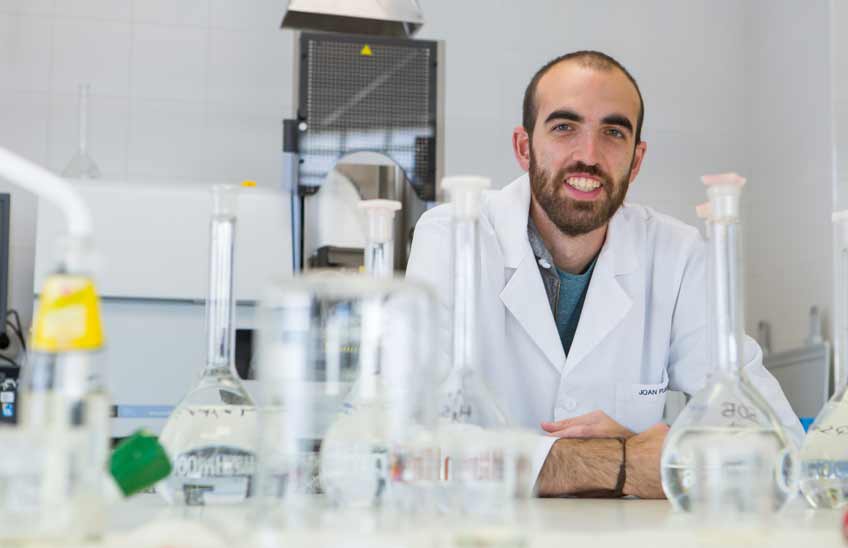Innovative nanocarriers as tools to combat disease
Joan Puig has developed his research on the synthesis and characterization of innovative polymeric Structures

FotoManuel Castells/<br>Joan Puig ha desarrollado su tesis doctoral sobre nano-portadores innovadores
11 | 05 | 2021
Joan Puig, chemist by the School of Sciences of the University of Navarra, has developed his doctoral thesis on the design and characterization of polymeric nanocarriers as new drug delivery systems. These systems work as nanometer-sized capsules that conduct the drugs to the place where they have to develop their activity, reducing the problems of efficacy and toxicity associated with them. "Increasing the safety and efficacy of already known molecules can help in the generation of new effective treatments for various diseases," notes the researcher.
The work developed by Dr. Puig is based on the employment of a family of polymers called poloxamines, molecules that have a water-loving part and a hydrophobic part, and which are capable of forming micelles and gels that respond to stimuli such as temperature or the acidity of the medium. One of Puig's proposals involves incorporating miltefosine, a molecule used for the treatment of leishmaniasis, into these aggregates, achieving formulations that enhance the drug's activity.
Other results of this research reveal that the combination of poloxamines with a surfactant derived from vitamin E has advantages for direct application. "The addition of modified tocopherol allows increasing the amount of drug that is encapsulated in the micelles, as well as decreasing the toxicity associated with the gels. This is important to be able to apply nanopotentiators as an injectable liquid that transforms into a gel at body temperature, in applications such as cardiac regeneration."
Another contribution of research has been the production of Structures that combines these polymers with cyclodextrins, ring-shaped molecules based on simple sugars, widely used in the pharmaceutical industry. The polymer "threads" the cyclodextrins, which enter successively to form a "molecular necklace". These molecules are thus stored for later release, which is being applied for the treatment of Niemann-Pick disease. "In this disease, which involves the accumulation of cholesterol in the lysosomes and leads to cell death, the cyclodextrins are capable of trapping the accumulated cholesterol, but they need nanocarriers to increase their effect".
According to Dr. Puig, the continuity of this research requires new programs of study studies on toxicity, stability, permeability and efficacy. "To date, the issue of research with poloxamines is rather limited, usually using surfactants with simpler Structures and which are not sensitive to pH. The response of poloxamines and their combinations to pH represents an important advantage, as it allows a drug to be released from the gel or micelles depending on the acidity of the medium," he concludes.
Bibliographic references
- Joan Puig-Rigall, María J. Blanco-Prieto, Aurel Radulescu, Cécile A. Dreiss, Gustavo González-Gaitano, Morphology, gelation and cytotoxicity evaluation of D-α-Tocopheryl polyethylene glycol succinate (TPGS) - Tetronic mixed micelles, Journal of Colloid and Interface Science 2021 582 (A), 353-363, Doi:10.1016/j.jcis.2020.08.004.
- Joan Puig-Rigall, Rafael Serra-Gómez, Nerea Guembe-Michel, Isabelle Grillo, Cécile A. Dreiss, Gustavo González-Gaitano Threading Different Rings on X Block Copolymers: Hybrid Pseudopolyrotaxanes of Cyclodextrins and Tetronics. Macromolecules 2020 53 (8), 3166-3174. Doi: 10.1021/acs.macromol.0c00409

